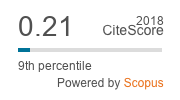AN EXPLORATION OF THE ZONE OF PROXIMAL DEVELOPMENT:
RECOVERING THE DIALOGICAL ORGANIZATION
Keywords:
Zone of proximal development, Mental testing, Learning potentialAbstract
This paper adresses important educational and psychological
implications of Vygotsky's theory of a zone of proximal development
(ZDP). Interrelated concepts of internalization and genetic law of cultural
development are discussed and give support to Vygotsky's argument that
ali higher psychological processes are originally social processes. The
potential application of ZDP and its utility and efficiency is analysed in the
context of current american and soviet research concerning the design of
diagnostic tests and instructional practices. The author considers the
possible advantages of the dynamic assesment of learning potential over
standardized I.Q. tests or achievement scores and suggests further research
questions in the área
References
J.V.Wertsch.Culture, Communication and Cognition: Vygotskian Perspectives.
New York: Cambridge University Press.
Brown, A.L. & French, L.A. (1979). The zone of potential development: Implication for
intelligence testing in the year 2000. Intelligence, 3, 255-277.
Budoff, J. & Hamilton, J.L. (1976). Optimizing test performance of moderately and
severely mentally retarded adolescents and adults. American Journal of Mental
Deficiency, 81, 49-75.
Campione, J.C.; Brown, A.L.; Ferrara, R.A. & Bryant, N.R.(1984). The zone of proximal
development: Implications for individual Differences and Leaming. Em, B. Rogoff
& J.V. Wertsch. Children's Leaming in the Zone of Proximal Development. San
Francisco: Jossey-Bass.
Ferrara, R.A.; Brown, A.L. & Campione, J.C. (1983). Childrerís leaming and transfer of
inductive reasoning rules: A study of proximal development. University of Illinois,
(manuscrito).
Feuerstein, R. (1979). The dynamic assessment of retarded performance: The Leaming
Potential Assessment Device: theory, instruments, techniques. Baltimore, University
Park Press.
Leontiev, A. N. (1981). The problem of activity in psychology. Em, J.V. Wertsch
(Org.).The Concept of Activity in Soviet Psychology.Armonk, N.Y.: Sharpe.
Lewin, Z.G. (1992). Aparência e Realidade: A reconciliação de indicadores incongruentes
da emoção. Psicologia: Teoria e Pesquisa, 8(2) 123-144.
Luria, A.R. (1976). Cognitive development: Its cultural and social foundations. Cambridge:
Harvard University Press.
Piaget, J. (1961). The genetic approach to the Psychology of Thought.Journal of
Educational Psychology. 52, 275-81.
Sampson, E. E. (1981). Cognitive Psychology as ideology. American Psychologist.
36(7): 730-43, jul.
Saxe, G.B. (1985). Effects of schooling on arithmetical understandings: studies with
Oksapmin children in Papua New Guinea. Journal of Educational Psychology. 77,
503-513.
Vlasova, T.A. (1972). New advances in Soviet defectology. Soviet EducationA A, 20-39.
Vygotsky, L.S. (1981 a). The gênesis of higher mental f unctions. Em J.V. Wertsch (Org.).
The concept of activity in Soviet Psychology. Armonk, N.Y.: Sharpe.
Vygotsky, L.S. (-1981 b). The development of higher forms of attention in childhood. Em
J.V. Wertsch (Org.). The concept of activity in Soviet Psychology. Armonk:
Sharpe.
Vygotsky, LS. (1989). A formação social da mente. São Paulo: Martins Fontes Editora.
Wertsch, J.V. (1985). Adult-child interaction as a source of self-regulation in children.
Em, S.R. Yussen. The growth of reflection in children.New York: Academy Press.
Wertsch, J.V. & Stone, CA. (1985). The concept of intemalization inVygotsky's account
of the gênesis of higher mental functions. Em, Wertsch, J.V. Culture, communication,
and cognition: Vygotskian perspectives.New York: Cambridge University
Press.



